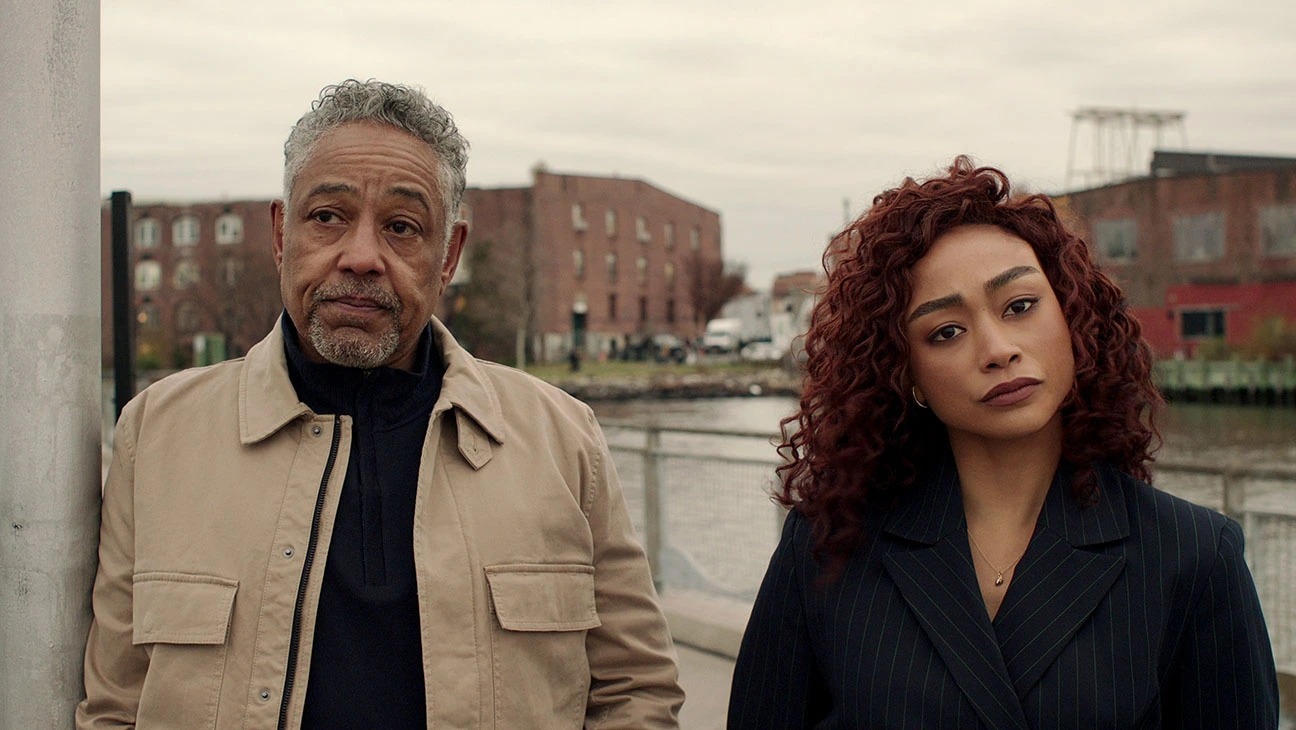When Netflix first announced its latest heist venture Kaleidoscope, I was genuinely intrigued. Though I don’t frequent the crime subgenre, a thrilling heist story is surely a worthwhile watch. The devices present in a writer’s toolbox – and whether the story unfolds linearly, non-linearly, from disparate points of view, or via flashbacks – allow the creator to craft an intricate, engaging narrative that often shocks the audience with twists and betrayals.
God Bless The Trap
With Kaleidoscope, the audience can choose the viewing order of seven of the eight episodes – something Netflix initially claimed would alter one’s perception of the outcome. The only condition here is that “White” must be watched last. This “Choose Your Own Adventure” approach to Kaleidoscope, while innovative, plays out in a gimmicky fashion that leaves a lot to be desired.
My viewing order: “Yellow: 6 Weeks Before the Heist,” “Green: 7 Years Before,” “Violet: 24 Years Before,” “Blue: 5 Days Before,” “Orange: 3 Weeks Before,” “Red: The Morning After,” “Pink: 6 Months After,” “White: The Heist”
The series stars Giancarlo Esposito as Leo Pap, fka Ray Vernon, as he devises a plan to steal $7 billion worth of untraceable bearer bonds from his former partner-turned-security mogul Roger Salas, played excellently by Rufus Sewell. He’s joined by former celly and small-time smuggler Stan Loomis, Stan’s ex-girlfriend and talented chemist Judy Goodwin, her new husband and frequent hot-head Bob Goodwin, and longtime accomplice Ava Mercer. Meanwhile, two FBI agents – Nazan Abbasi and partner Toby – obsess over the heist they know is coming but may not be able to stop.
While Esposito’s opportunity to lead an intriguing cast of characters certainly isn’t wasted, the series’ structure prevents true character and plot growth. Character beats are often repeated, likely because the writers don’t know what you know at any given point. This repetition – along with the absence of further exploration into the unique pasts of these characters – leaves most of the crew feeling underdeveloped. Further, relationships matter a lot in heist stories. It isn’t all about the attainment of riches. The lack of attention given to this idea leads to a deficit in the plot’s effectiveness.
The Universe Will Let It Happen
And it isn’t just the characters that desperately crave depth. Kaleidoscope drops plenty of promising narrative seeds that go unfertilized. For example, one of the flashback episodes sees Leo briefly mention the racial disparity that exists between he and Roger should they get caught. Here lies a chance to really dig into how race impacts the former partners’ career paths, though it goes unexplored further. So many of the paper-thin ideas in Kaleidoscope require a more linear storytelling style to get thick and interesting. The result is a product that feels more manipulative and melodramatic than it should. Clearly, there’s something lost when a story unfolds randomly.
Chronological viewing order: “Violet,” “Green,” “Yellow,” “Orange,” “Blue,” “White,” “Red,” “Pink”
One of the biggest issues with the randomness stems from having the true finale occur before the actual heist. “Pink” shows us exactly how the story wraps up – and who dies – before we even know what went down during the actual heist. Ultimately, this greatly took away from my interest in “White” as the stress of wondering if [insert person here] will make it out alive is completely eliminated.
HBO Shares Chilling First Trailer for ‘The Last of Us’ Series
Additionally, there are a plethora of narrative questions that go unanswered. [SPOILER WARNING]. Who poisoned Nazan on the street? How did Roger’s son know to track down and kill Leo? What even is the point of introducing The Triplets when the billionaires could’ve easily been faceless? Critics have postulated that these questions could be answered in season two, but I remind them that Netflix bills Kaleidoscope as a limited series. Moreover, do we really want to endure the underwhelming chaos of randomness a second time?
Overall, the unique format of Kaleidoscope proves to be its downfall. Eliminating the gimmicky randomness would’ve allowed the writers to craft a significantly better story. Nonetheless, Giancarlo Esposito is phenomenal and there’s strong energy between the crew members that make the series a fun watch. If you love heist stories, Kaleidoscope is an experiment worth watching. However, it’s unlikely to rank as a seminal work in the genre regardless of its innovative presentation.
Best viewing order: “Yellow,” “Green,” “Violet,” “Orange,” “Blue,” “Red,” “White,” “Pink”
Lastly, for more reviews, check out this Film Review: Everything Everywhere All at Once.









